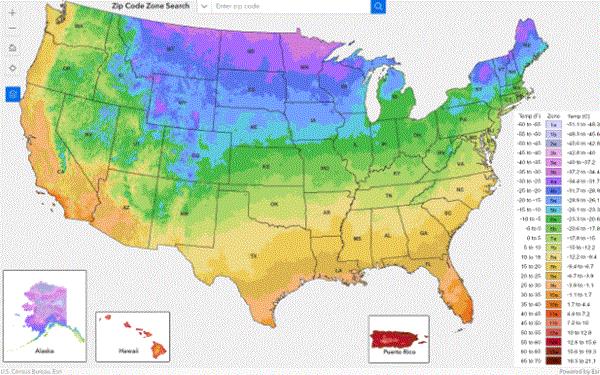What Weed Did Paul Find?
Last time, I introduced y’all to a weed identification challenge in Paul Pilon’s Perennial Pulse newsletter. Paul told me that some of you’d participated in the guessing game. Thank you! I’d be red-faced if I mentioned it, but didn’t manage to direct any participants to Paul.
Paul made the big reveal in his latest Perennial Pulse. The mystery weed is cudweed. Paul consulted with two authorities in nursery weed management on the identification: Joe Neal of North Carolina State University thought it might be purple cudweed, and Chris Marble of the University of Florida said it might be wandering cudweed. It’s hard to make a definitive identification based on a picture.

What did I think it was? At first, I thought it was rabbit tobacco, aka sweet everlasting (Pseudognaphlium obtusifolium). But the seed heads simply didn’t look right to me. I finally settled on cudweed. Like Paul, I didn’t know which cudweed species exactly. (Give this entomologist a break on weed identification, won'tcha? I thought I did pretty good by guessing close, relatively, in my first try.)
Check out what other folks had guessed about Paul’s mystery weed by going HERE. (Just to be on the record, I’d have gone with Weedie covidensis simply for its attempt at having some fun at a challenge.)
I see cudweed frequently in and around nurseries, usually on the ground (poking through holes in groundcovers or mats). I haven’t seen them becoming a weed problem in containers or in greenhouses. Learn something new!
Joe noted, “The seeds are wind dispersed, but … only short distances. When you see species like this, look around for sources/liners and infestations near potting substrate storage areas or mature weeds in close proximity.”
There you have it—management of a new weed. Clean them up around your growing area, my friends.
If you haven’t heard of rabbit tobacco before, go HERE. This fact sheet notes that rabbit tobacco is one of the major food sources of the American painted lady caterpillar. (Cudweeds and other asters also serve as a buffet for the American painted lady butterfly.) What the fact sheet doesn’t mention is how I learned of this species and the reason for its common name. I was walking around my wife’s grandparents’ front yard several summers ago when Uncle Hugh just said matter-of-factly, “That’s rabbit tobacco. We smoked it when we were kids.” I did a double take, but I was sure that wasn’t a joke. Despite its common name, I’m not sure if it really does any good as a tobacco replacement.

USDA Updates the Plant Hardiness Zone Map
The United States Department of Agriculture (USDA) unveiled its updated Plant Hardiness Zone Map last week. This is a big deal because the last update was more than 10 years ago. Just like the 2012 version, the new map was developed jointly by USDA’s Agricultural Research Service (ARS) and Oregon State University’s (OSU) PRISM Climate Group.
Armed with more than 13,412 weather stations (compared to 7,983 in 2012), the updated map is more accurate and detailed. The finer resolution is particularly obvious for Alaska. The map divides the continental United States, Alaska, Hawaii and Puerto Rico into 13 zones (and two half-zones within each zone) based on average lowest winter temperatures over 30 years, from 1991 to 2020).
Each zone represents a range of 10F. For example, the average lowest winter temperature in Zone 8 ranges from 10F to 20F, with Zone 8a ranging from 10F to 15F and Zone 8b ranging from 15F to 20F.
We’ve been using the Hardiness Zone Map to select the right plants for the right places, especially when considering cold hardiness, for decades now. The updated map will continue to provide the same information. Y’all can find out which zone you’re in by entering your zip code (on the top of the map). You can also download regional and state maps and print them.

The updated map also contains a new section called “Tips for Growers.” This section contains several videos and links to information and tips on gardening, soil health, pest management and research conducted by ARS scientists. Want to know how ARS scientists are helping folks grow plants in a hotter world? There’s a link for that!
I’m interested in knowing how my home state is now represented in the updated map. You know what I noticed? Zone 9 has expanded along the coast of South Carolina, whereas Zone 7 has retreated to the mountain tops. Zone 8 roughly mirrors the soil type and eco-regions, with the Coastal Plains in Zone 8b and the Piedmont in Zone 8a.
The developer of the map also noted the same shift to the next warmer half-zone in about half of the country in the 2023 map when compared to the 2012 version. In case anyone is taking that shift as the evidence of climate change, ARS was quick to point out that isn’t necessarily so. As stated in the news release,
“Temperature updates to plant hardiness zones are not necessarily reflective of global climate change because of the highly variable nature of the extreme minimum temperature of the year, as well as the use of increasingly sophisticated mapping methods and the inclusion of data from more weather stations. Consequently, map developers involved in the project cautioned against attributing temperature updates made to some zones as reliable and accurate indicators of global climate change (which is usually based on trends in overall average temperatures recorded over long time periods).”
Go HERE to play with the new map!

The Return of Chlorpyrifos ...?
Chlorpyrifos is an old organophosphate insecticide. Y’all probably know the compound under the trade names Dursban, DuraGuard and Chlorpyrifos. It’d been on the chopping block of the Environmental Protection Agency (EPA) for many years. Residential use of this insecticide was banned in 2000. EPA issued a ban of chlorpyrifos on all food crops in 2021 in response to an order from the U.S. Court of Appeals for the Ninth Circuit (based in San Francisco). Go HERE to read an article on the impact of losing chlorpyrifos from our own Chris Beytes.
Apparently, the 2021 ban wasn't the end of the story. On November 2, the U.S. Court of Appeals for the Eighth Circuit (based in St. Louis) overturned the ban and ordered EPA to reevaluate whether chlorpyrifos can be safely used on food crops. The court ruled that EPA failed to consider recommendations from its own scientists and, when under pressure from a short (Ninth Circuit) court-ordered deadline, EPA chose to ban all uses on food crops rather than considering whether the pesticide could be safely used on a few selected crops, such as soybeans and sugarbeets.
Obviously, the battle over chlorpyrifos isn’t over. The Eighth Circuit handed a victory to farmers this time. Environmental groups vowed to challenge the court ruling. In the meantime, it’s unclear if EPA will revisit the cancellation of chlorpyrifos registrations, which it has planned to finalize the same week of the court ruling. It’s also unclear if manufacturers who stopped the production of chlorpyrifos will renew registration and resume their production.
The ruling applies to the fate of chlorpyrifos on food crops. The sentiment of not knowing what will happen to the use of chlorpyrifos in nurseries and greenhouses, as articulated in Chris’ article from 2021, will likely continue. In my mind, the status of chlorpyrifos in our industry is a moot point even if the chance of a ban of chlorpyrifos on ornamental crops is lessened because of this ruling. Most growers I know don’t even use chlorpyrifos anymore, mainly because of the long re-entry interval (24 hours). There are many options for the management of fungus gnats, mealybugs, fire ants, Japanese beetle grubs and other pests. I think losing chlorpyrifos will likely have minimal impact.

Is AI your next pest manager?
Our own Jennifer White, editor of the GreenTalks newsletter, alerted me to this story about using artificial intelligence (AI) for finding insect control solutions. Go HERE for Jennifer’s report.
Everybody is talking about AI these days, especially venture capitalists. Osmo, a start-up launched in January 2023, announced last week that it'd received a grant of $3.5 million from the Bill & Melinda Gates Foundation to develop its AI-enabled platform for discovering and producing scent compounds that can be used for controlling disease-carrying insects.
Okay, everything I just said seems like a mouthful or (worse) gibberish. Let’s try again. Osmo plans to build its AI Scent Platform for screening billions of chemical compounds to identify ones that can be used to repel (from humans and animals), attract (to a trap or similar device) or kill insects. Instead of relying on researchers to test one compound at a time, the platform uses machine learning to figure out which molecules have the characteristics of being repellent, attractive or toxic, and use that model to screen and select candidate molecules in seconds.
Osmo suggests that this system can be faster and better in discovering cheap and effective compounds. In a pilot project, the team was able to identify and test eight molecules (out of about 400) that were more repellent than DEET.

The $3.5-million grant adds to the investment of $65 million at the company’s launch. That’s a lot of money because it takes a lot of money to develop a regenerative AI system and to discover new technologies. Osmo will focus on disease-carrying insects, such as mosquitoes, at the beginning. If the system is successful, I can see them expanding the range of pests to those attacking plants. This is an interesting way of careening for new pesticides or repellents. I’m eager to see what they come up with in the next few years.
Information about Osmo and the AI Scent Platform is available HERE.





Happy Thanksgiving, y'all!

JC Chong
Technical Development Manager at SePRO
Adjunct Professor at Clemson University
This e-mail received by 27,847 subscribers like you!
If you're interested in advertising on PestTalks contact Kim Brown ASAP!